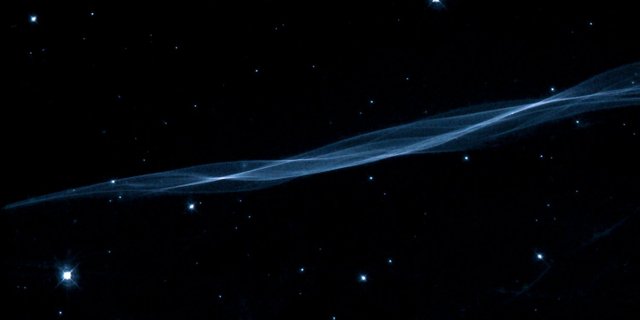Massive Strings Of The Cosmic Web Fuel Galaxies
Cosmic filaments are like gigantic arteries of a cosmic super-organism that provide gas to the hungry mouths of quickly growing galaxies and supermassive black holes.

- Be also sure to check out my other posts and follow me @kralizec and subscribe to my Youtube channel at Kralizec Gaming Youtube Channel
Space is big. Yet, the majority of it is made by the emptiness of the void. But the void is also the place where strings of the cosmic web made by cosmic filaments. These are made by gas and they are up to millions of light-years long.
An international team of experts led by Hideki Umehata from the Japanese RIKEN Cluster for Pioneering Research and from the University of Tokyo used the Multi Unit Spectroscopic Explorer (MUSE) device on the Very Large Telescope (VLT) telescope system and the Suprime-Cam device on the Subaru telescope on Mauna Kea to get a good look at the cosmic web filaments that connect galaxies in the large and very distant protocluster of galaxies.
Thanks to their successful direct observations and later mapping of the cosmic filaments the researchers found out that the filaments in the protocluster correspond to the predictions of a model for galaxy creation based on cold dark matter. They are truly gigantic and they bring fuel for the creation of new stars in galaxies and the growth of their supermassive black holes.
The scientists observed the strings of the cosmic web in a massive protocluster of galaxies known as SSA22. This protocluster can be found in the Aquarius constellation about 12 billion light-years away. The observations confirm that the cosmic filaments feed the intensive creation and growth of galaxies in places where the cosmic strings cross and thus create areas with a higher concentration of mass.
The researchers also discovered that in these places we can find active galactic cores and galaxies that are full of newly created stars. To get their exact positions they used the Atacama Large Millimeter/submillimeter Array (ALMA) and the W.M. Keck Observatory.
The observations of the cosmic web of the protocluster SSA22 are based on the detection of hydrogen radiation on the Lyman-alpha spectral line. This is ultraviolet radiation that is usually absorbed by the Earth s atmosphere. But if the Lyman-alpha comes from very deep space it becomes red-shifted by a lot and that allows it to pass through the atmosphere allowing terrestrial observatories to detect it. The observed radiation was very intense probably because of the intensive activity of growing supermassive black holes and galaxies.
According to the scientists, this seems to strongly imply that gas-powered by gravity is flowing alongside the strings of cosmic filaments and that this gas is what fuels the precipitous creation of stars in galaxies and the growth of the insatiable supermassive black holes. This is likely the way how the structure of the universe as we know it is being created.
Sources:
- https://science.sciencemag.org/content/366/6461/97.editor-summary
- https://www.eurekalert.org/pub_releases/2019-10/r-mff093019.php
- If you like the content I’m producing about science maybe you will like the content I produce about gaming as well! Be sure to check out my other posts!
To listen to the audio version of this article click on the play image.

Brought to you by @tts. If you find it useful please consider upvoting this reply.
Congratulations @kralizec! You have completed the following achievement on the Steem blockchain and have been rewarded with new badge(s) :
You can view your badges on your Steem Board and compare to others on the Steem Ranking
If you no longer want to receive notifications, reply to this comment with the word
STOPVote for @Steemitboard as a witness to get one more award and increased upvotes!
@tipu curate :)
Hi, thanks for the post! I have included it in my latest daily Science and technology digest, and you'll receive a 10% share of that post's rewards.